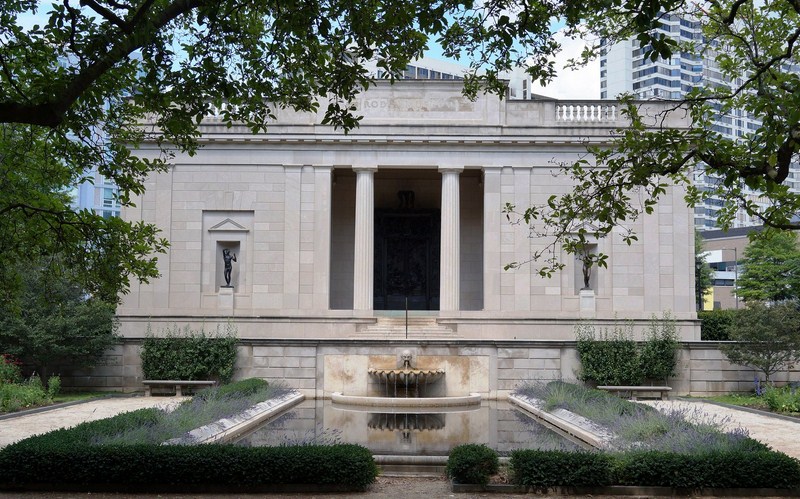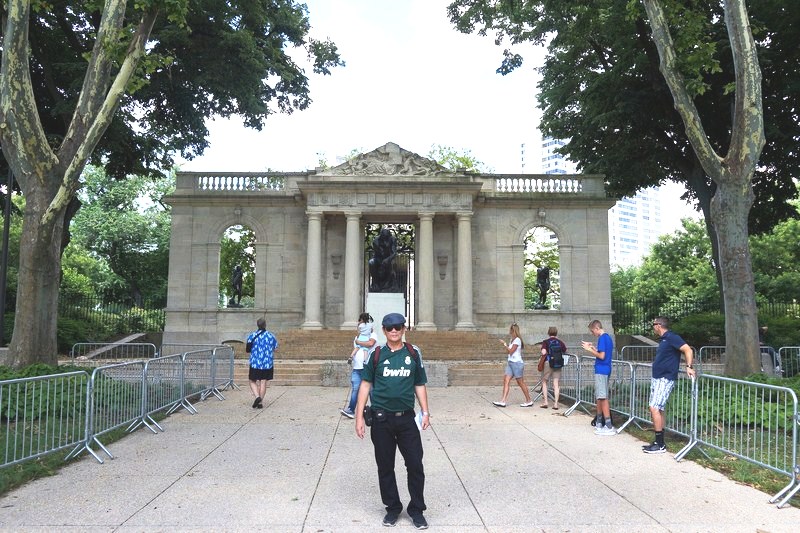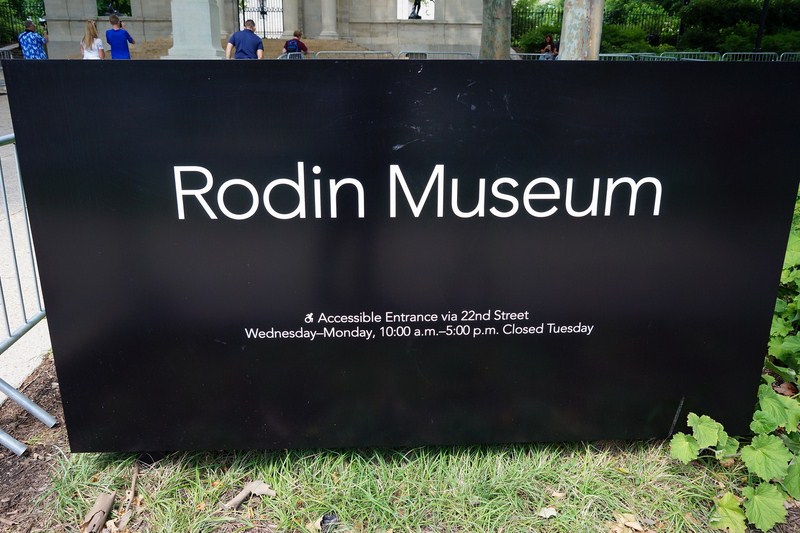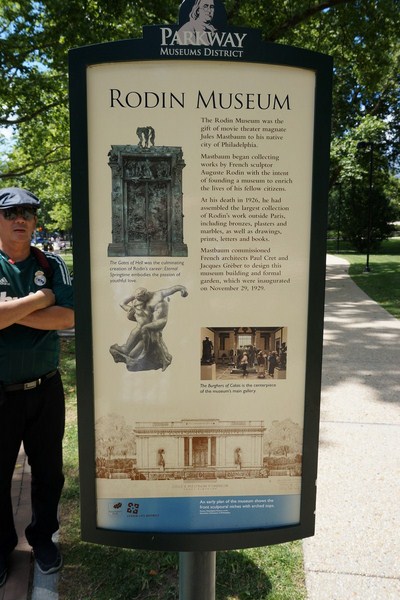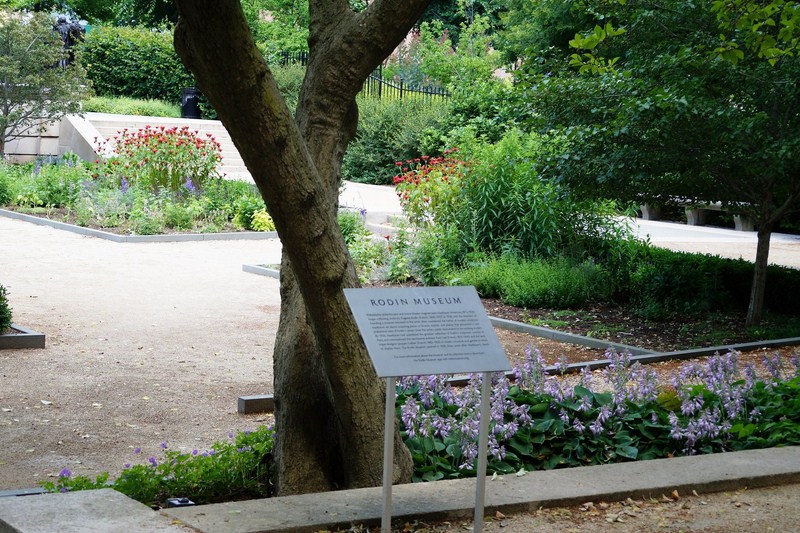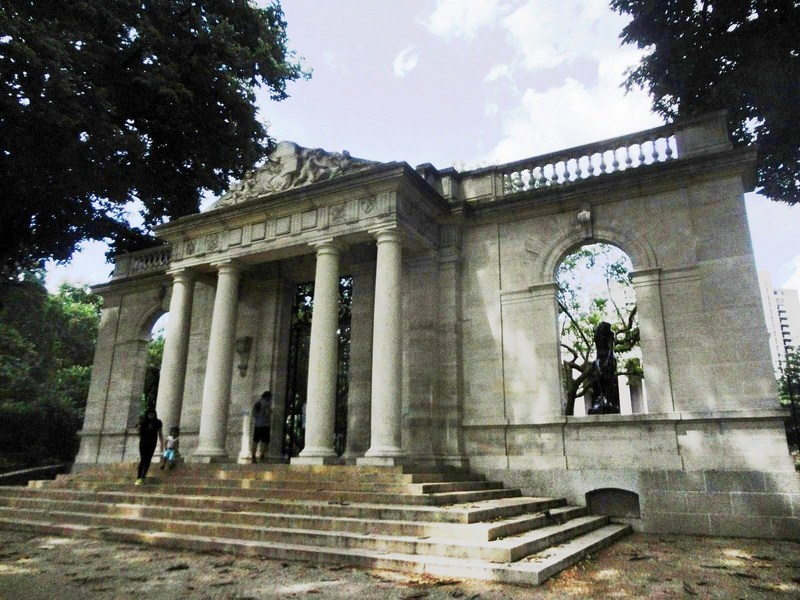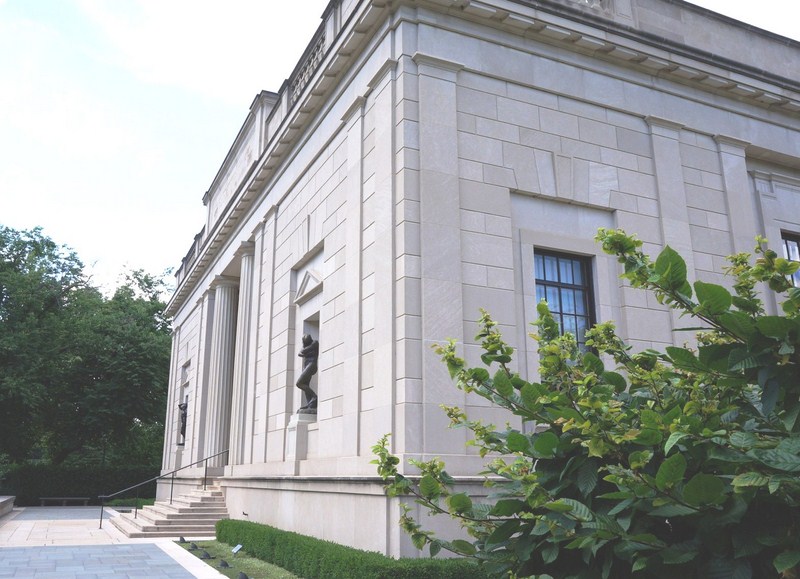The Rodin Museum, an art museum containing one of the largest collections of sculptor Auguste Rodin‘s works outside Paris, is administered by the Philadelphia Museum of Art. Our entrance ticket to the Philadelphia Museum of Art also included entry to this museum but it just so happened to be closed, it being a Tuesday. However, the Dorrance H. Hamilton Garden, just outside the Museum displays eight of Rodin’s works.
Check out “Philadelphia Museum of Art”
The only dedicated Rodin Museum outside France, it houses a distinguished collection of nearly 150 objects containing bronzes, marbles, and plasters by Auguste Rodin, representing every phase of his career.
The elegant Beaux-Arts–style building and garden, nestled between the Philadelphia Museum of Art’s main building the Free Library of Philadelphia (opened its central Logan Square location in 1927), was the gift of founder, entrepreneur and philanthropist Jules E. Mastbaum (1872–1926) to the city of Philadelphia.
This movie-theater magnate began collecting works by Rodin in 1923 with the intent of founding a museum to enrich the lives of his fellow citizens. Within just three years, he had assembled the largest collection of Rodin’s works outside Paris, including bronze castings, plaster studies, drawings, prints, letters and books.
In 1926, Mastbaum commissioned French architect Paul Cret (1876–1945) and French landscape designer Jacques Gréber (1882–1962) to design the unique ensemble of Beaux-Arts building and formal French gardens. The murals inside the museum were executed by the painter Franklin C. Watkins.
However, Mastbaum did not live to see his dream realized, but Etta Wedell Mastbaum, his widow, honored his commitment to the city, and the Museum opened on November 29, 1929. It was immediately embraced and celebrated and, in its first year, drew over 390,000 visitors, including poet and dramatist Paul Claudel, the French Ambassador to the U.S..
In 2012, the museum re-opened after a three-year, US$9 million renovation that brought the museum back to its original vision of displaying Rodin’s works. Today, the Rodin Museum is one of the defining icons of Philadelphia.
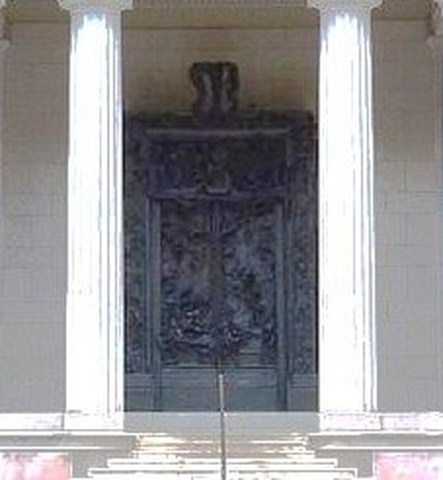
The Gates of Hell, standing at 6 m. high, 4 m. wide and 1 m. deep (19.7×13.1×3.3 ft.), contains 180 figures, several of which were also cast as independent free-standing statues, and depicts a scene from the Inferno, the first section of Dante Alighieri’s Divine Comedy.
Visitors once entered through The Gates of Hell, a massive 5.5-m-tall bronze doorway (which is no longer used) that was originally created for the Museum of Decorative Arts (which was to have been located in Paris but never came into existence).
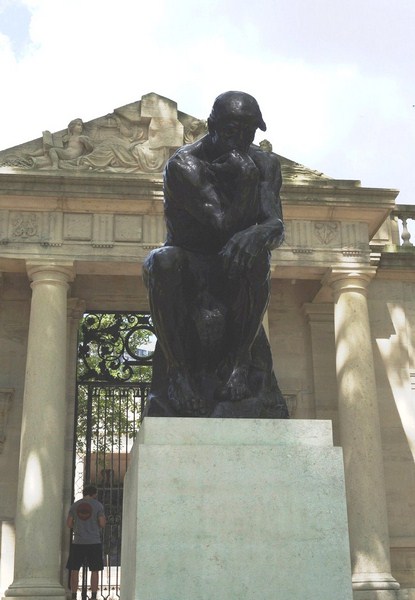
The Thinker. Its pose is one of deep thought and contemplation. The statue is often used as an image to represent philosophy.
From 1880 until his death in 1917, Rodin sculpted more than 100 figures for these doors. This casting is one of the three originals; several others have been made since. Several of his most famous works, including The Thinker (1880–1882), the best-known of Rodin’s worksfirst seen as an independent work in 1883, are actually studies for these doors which were later expanded into separate works.

The Three Shades(Les Trois Ombres) are a sculptural group of three identical figures gathered around a central point, produced in plaster in 1886 for his The Gates of Hell, .
For the first time since 1963, recent advances in conservation, undertaken by the Philadelphia Museum of Art, have permitted the return of Adam and The Shade to their original places within the arches of the Meudon Gate.
The Age of Bronze (Rodin’s breakthrough sculpture) and Eve has also returned to the niches they once occupied on either side of the museum’s portico overlooking the reflecting pool. A version of the monumental The Three Shades, a generous loan from Iris and B. Gerald Cantor, sits on the building’s west side in a space that was vacant for most of the last eighty years.
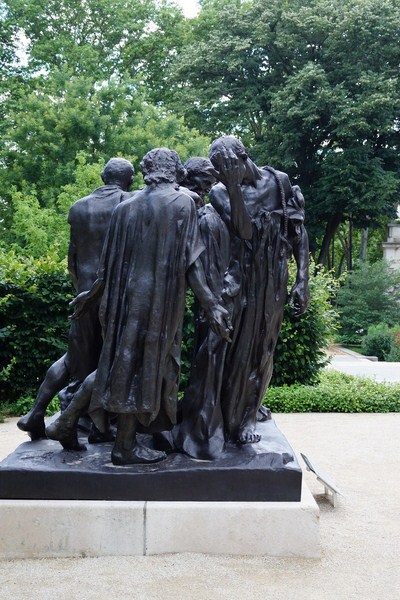
The Burghers of Calais (1895). This bronze figure group commemorates six merchants of Calais who offered themselves as hostages to Edward III after he besieged the city for almost a year in 1347.
The museum’s several rooms house many more of the artist’s works, including The Kiss (1886), Eternal Springtime, which Rodin had presented to Robert Louis Stevenson in 1885, The Age of Bronze (1875–76), and The Burghers of Calais, a monument commissioned by the City of Calais in 1884.
NOTE:
In 2019, the Rodin Museum mounted a two-year special exhibition titled Rethinking the Modern Monument. Curated by Alexander Kauffman, it paired 16 works from the Philadelphia Museum of Art with selected Rodin sculptures. The special exhibition featured bronze sculptures by Jean Arp, Barbara Hepworth, Jacques Lipchitz, Marino Marini, Chana Orloff, and Alberto Giacometti, among others.
Rodin Museum: 2151 Benjamin Franklin Parkway (at 22nd Street), Philadelphia, Pennsylvania. Open Wednesdays –Mondays,, 10 AM.–5 PM. Tel: (215) 763-8100. Website:
www.rodinmuseum.org. Coordinates: 39.962°N 75.174°W.
How to Get There: SEPTA bus: 7, 32, 38, 48, 49, Philly PHLASH; Suburban Station.

